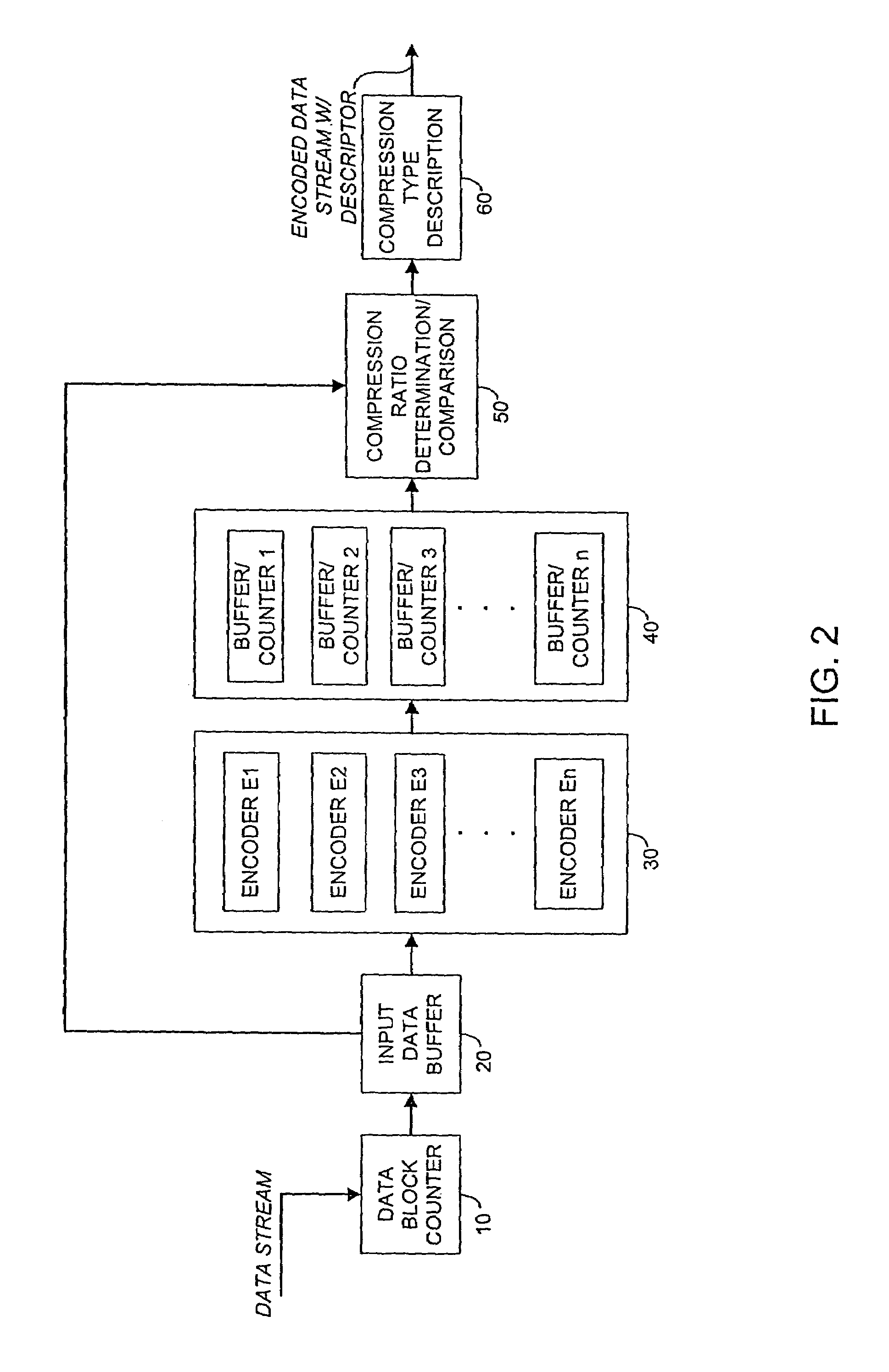Systems and methods for data compression such as content dependent data compression
a data compression and content-dependent technology, applied in the field of data compression and decompression, can solve the problems of lossy data compression of visual imagery, inexact representation, and the inability to delete information content in excess of display resolution or contrast ratio, and use lossless compression techniques
- Summary
- Abstract
- Description
- Claims
- Application Information
AI Technical Summary
Benefits of technology
Problems solved by technology
Method used
Image
Examples
Embodiment Construction
[0058]The present invention is directed to systems and methods for providing data compression and decompression using content independent and content dependent data compression and decompression. In the following description, it is to be understood that system elements having equivalent or similar functionality are designated with the same reference numerals in the Figures. It is to be further understood that the present invention may be implemented in various forms of hardware, software, firmware, or a combination thereof. In particular, the system modules described herein are preferably implemented in software as an application program that is executable by, e.g., a general purpose computer or any machine or device having any suitable and preferred microprocessor architecture. Preferably, the present invention is implemented on a computer platform including hardware such as one or more central processing units (CPU), a random access memory (RAM), and input / output (I / O) interface(s...
PUM
 Login to View More
Login to View More Abstract
Description
Claims
Application Information
 Login to View More
Login to View More - R&D
- Intellectual Property
- Life Sciences
- Materials
- Tech Scout
- Unparalleled Data Quality
- Higher Quality Content
- 60% Fewer Hallucinations
Browse by: Latest US Patents, China's latest patents, Technical Efficacy Thesaurus, Application Domain, Technology Topic, Popular Technical Reports.
© 2025 PatSnap. All rights reserved.Legal|Privacy policy|Modern Slavery Act Transparency Statement|Sitemap|About US| Contact US: help@patsnap.com



